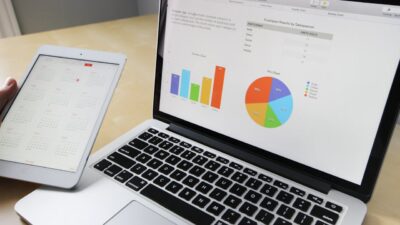An accurate invoice addressing all aspects has numerous benefits, including faster payment. The article provides a detailed guide on creating invoices for retailers that will help them get paid sooner in 2022.
Meaning of Invoice or Bill
An invoice or bill is a document that lists down items sold and records every trade between your retail business and customers. The document confirms and records the sale of products to a customer. It also confirms the amount due to be paid by the customers to the Retailer.
Invoices form the backbone of a retailer’s cash flow, inventory tracking process, and accounting. Invoicing is also necessary because they consist of all the crucial information on a single page, such as a list of products sold and their price, total taxes and invoice value due, Retailer and the customer’s information, payment terms, etc. the delivery details.
Retail Invoicing Purpose
1. For timely payment and tracking sales
Invoices allow retailers to track and get paid. They provide the payment terms regarding the due date to make payment and modes allowed. These help retailers forecast the cash flow, plan actions, and account for related expenses.
Since invoices allow retailers to track sales, they know the specific products and quantities sold and the number of sales in a given period. It is helpful to understand the impact of marketing or promotional activities on retail sales and lets the retailer plan for the next period.
2. For tax compliance
Invoices are crucial in accounting and tax compliance. They allow the retailers to keep track of the retail shop’s revenue for Goods and Services (GST) return filing since each bill is a tax document.
A retailer needs to save the invoices issued to report the revenue earned through the business. It includes reporting of GST collected under every GSTIN used for invoicing.
3. For understanding business metrics
When retailers keep detailed track of the products they sell, they can better forecast product demand for the retail store. They can further predict the specific seasons behind such numbers and confirm if it is based on annual trends. When the Retailer knows what to expect, they can be better prepared for the retail store’s structure, sales promotions, and staff hiring and schedules.
It also implies that one can track and make adjustments to the inventory accurately to improve cash flow and avoid overstocking a popular product or running out of it.
Time To Raise A Retail Invoice
In general, for the sale of goods, invoices are issued once the goods are delivered with a credit period usually ranging up to 30 to 45 days from the invoice date.
The GST law lays down the time limit for GST registered retailers to raise tax invoices. The time limits for issuing invoices for taxable goods and tax-exempt goods remain the same. If the sale is normal and one-time, the time limit of raising invoice can be as follows-
- If it involves product movement- On or before removing the goods by the Retailer, they must issue an invoice—for instance, a retailer M/s. ABC home appliances in Bangalore sells TV sets. The Retailer must deliver 3 TVs to consumer Akash in Mumbai. Here, since the sale involves the movement of goods, the invoice must be issued on or before the dispatch date of the consignment.
- If it does not involve product movement, an invoice must be issued on or before the product delivery date. For instance, ABC Ltd. buys lift for its office. The retail store agrees to install it at office premises. In this case, since the supply does not need any product movement, the invoice has to be issued on or before the time when the lift is ready for use by ABC Ltd.
The law varies for the continuous supply of goods under an arrangement. If the sale has successive account statements or successive payments, the invoice or bill must be issued before or during each such account statement is released or upon each such payment receipt.
For any unregistered retailers not subject to GST, the time limit is on or before delivering goods or products to the consumers, following popular trade practices.
The time and date to raise an invoice by a retail store will positively determine and affect the invoice due date of the invoice or bill. It ultimately affects the time the customer or buyer pays for the invoice to the Retailer, impacting its cash flow.
Contents Of Retail Invoice
An ideal invoice or bill will have the following contents:
- Retail business name and logo
- Unique invoice number
- Address and contact information of both Retailer and customer, if necessary
- Invoice issue date
- Details of products sold, unit of measurement, quantity and value
- Additional charges such as charges, fees or taxes
- The total invoice amount due
- Payment terms and conditions
- Invoice due date
Components of tax invoice include:
- Name, address, and GSTIN of the customer and Retailer
- Product HSN code and GST rate for every product
- Invoice number serially mentioned uniquely in every financial year
- Invoices type as heading like tax invoice, supplementary invoice or revised invoice
- Product description
- Units or quantity of products sold
- CGST, SGST, IGST or UTGST amounts separately
- State and place of supply
- The total amount of products supplied
- Delivery address if it is not the same as billing address
- If a reverse charge applies, then it must be mentioned
- A signature or digital signature of the Retailer or any authorised person
2022 Tips To Get Paid For Invoices
A retail invoice must be limited to a single page except if the purchase order has a long list of items that cannot fit on a single page. That shall contain the Retailer and customer details and product and payment/shipping details.
1. Cloud-based invoicing solution
Cloud-based invoicing software allows you to share invoices over email to your customers with a click of a button, thus quickening the payment process. Utilise cloud forecasting tools to anticipate the time of payment from customers. The finance team can prioritise the suitable customers keeping this data in mind.
2. Create professional invoices
Customers respond quickly to professionalism. The tone used in the invoice must be clear, polite and precise. Creating invoices on professional-looking templates will show how reputable the business is.
3. Invoice tracking and payment follow-ups
It is beneficial to communicate with customers regularly. Usually, when payments are overdue, constant communication can be beneficial. Invoices must outline payment terms and due dates to help a retailer predict cash flows. The invoice tracking and reviews of account receivables every week help retailers stay on top of invoices that are due.
4. Use QR codes and payment links on invoices
Invoices with links or QR codes for instant scanning and payment are more convenient for retail customers. It ensures faster and easier payment options for invoices.
5. Charge late fee or interest for delayed invoice payments
The Retailer must charge interest for every day of delay for payments made beyond the due date. It will necessitate the customers to be more responsible in clearing the dues.
6. Provide for early pay discounts
Retail businesses can provide discounts to their early payers. It enables them to receive funds much faster than the due date.




